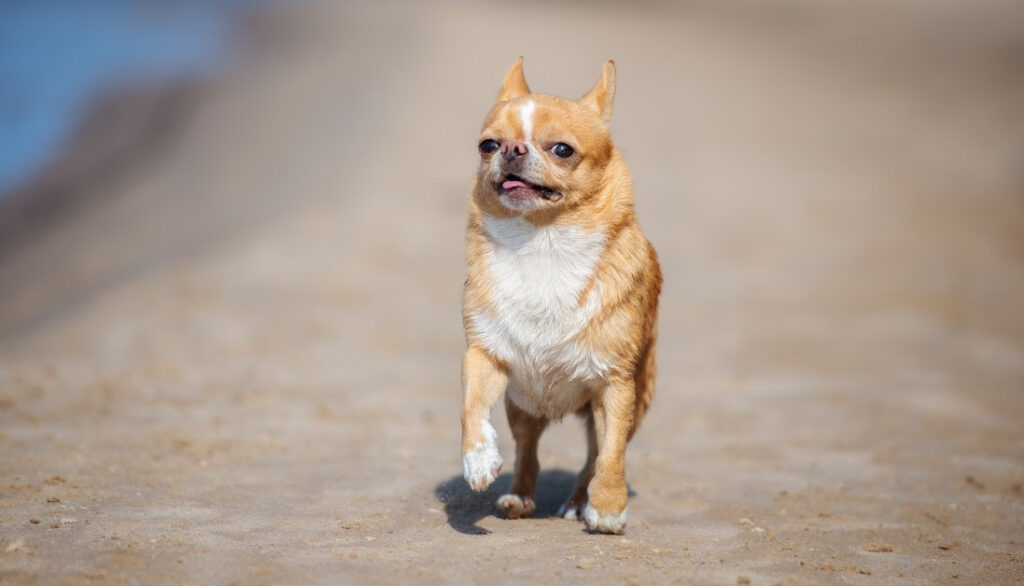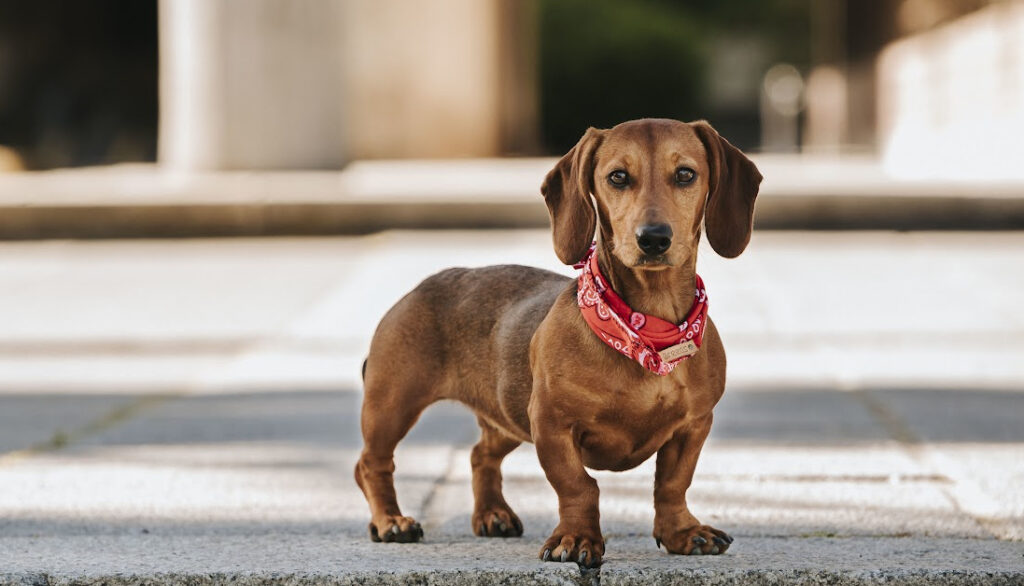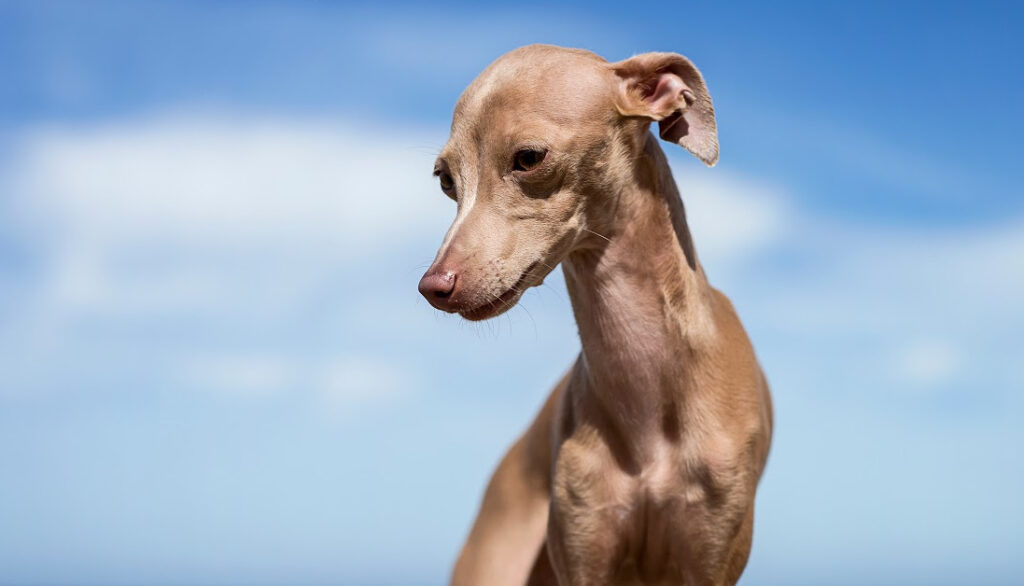Ever wonder why your furry friend loves tucking in under your bed covers? This endearing trait is a common preference for certain dog breeds and can be traced back to their natural instincts. It’s not just about seeking warmth and comfort, but there’s also a psychological aspect tied to their need for safety and security.

Many dogs seek comfort in the same way humans do. There’s something undeniably cozy about being nestled under the covers, and for dogs, this comfort can provide a feeling of protection and security. However, the significance of under-cover sleeping goes beyond just comfort. It’s also linked to their primal behaviors such as the desire to burrow.
The joy of snuggling beneath the covers isn’t limited to any specific dog breed. However, certain breeds do exhibit a stronger preference for this. For instance, smaller breeds like Dachshunds and Chihuahuas are known to have an innate instinct to burrow, making them more likely to enjoy this cozy habit. Even some larger breeds, contrary to what you might expect, enjoy snuggling under the covers too.
It’s important to note that while this sleeping habit can be adorable and comforting, there are also health considerations for under-cover sleepers. Concerns may include potential overheating and limited fresh air access. Therefore, creating a safe and comfortable sleeping environment for your dog is crucial. As a holistic veterinarian, I know how important it is to understand our pets’ behaviors and preferences. It helps us to provide them with the care and comfort they need and deserve.
In this article, we will delve into the world of dog breeds that like to sleep under the covers. From understanding their psychology to adapting to seasonal changes, we’ll cover all you need to know about these comfort-loving canines. So, if your dog is a cover-lover or you are planning to adopt a breed that might be, you’re in the right place. Let’s get started!
The Psychology Behind Cover-Loving Dogs
Ever wonder why some dog breeds snuggle up under the covers while others sprawl out on the floor? The answer lies in the fascinating psychology of our four-legged friends! Harnessing the knowledge of why certain dog breeds favor the coziness of covers can help you better understand their behaviors and cater to their unique needs.
Security and Safety Needs
First and foremost, think about the ancient ancestors of today’s domesticated dogs. They were wild animals who had to fend for themselves in tough environments. They instinctively sought shelter in dens, caves, and other enclosed spaces for protection against predators and harsh weather. This primal need for security has not entirely faded away in some dog breeds, who manifest it by burrowing under the covers. It’s a quiet, dark, and enclosed space, resembling a den, and it makes them feel safe and secure.
Warmth and Nesting Instincts
Another crucial factor is warmth. Especially for small dog breeds, including “dog breeds that like to sleep under the covers,” staying warm can be quite a task. Their small bodies lose heat faster, so they naturally seek out sources of warmth to conserve body heat. Crawling under the covers with their favorite humans is their intuitive solution!
There’s also the nesting instinct that is strong in some breeds. Like birds building nests for their eggs, dogs, too, engage in nesting behavior. For them, it’s not about laying eggs but about creating a comfortable, warm, and safe space for sleep. When your dog burrows under the covers, it is merely responding to a deep-seated instinct to nest.
Comfort and Bonding
Finally, there’s the comfort factor. Who doesn’t enjoy being wrapped up in a warm, cozy blanket? Our canine friends are no different, particularly the breeds with a fondness for under-cover sleeping. This behavior also reflects their loving nature and a desire for bonding. Your scent on the covers provides them with a sense of closeness, even when you’re not in the room.
The Role of Breed
Interestingly, breed plays a significant role in this behavior. Some breeds, such as Dachshunds and Chihuahuas, are well-known for their love for burrowing under covers due to their history. Dachshunds were bred to burrow into burrows and flush out prey, while Chihuahuas, being small, would have sought warmth and safety in hidden spots.
Understanding the psychology behind why some breeds prefer the sanctuary of covers can help you meet their needs and ensure they feel safe, warm, and comfy. Remember, your furry friend’s behavior is just a part of their unique personality and charm!

Top Breeds Known for Sleeping Under the Covers
When it comes to canine sleeping habits, some breeds are more inclined to burrow under covers than others. While it’s not a behavior exclusive to any one breed, certain dogs seem more drawn to the warmth and security offered by sleeping under the blankets.
Small Breed Tendencies
Small dog breeds, in particular, often show a fondness for burrowing under the covers. This is not surprising, as smaller dogs get cold easier due to their petite size and lack of body fat.
Dachshunds, for example, were originally bred to hunt burrowing animals, which may explain their innate desire to dig and nest under blankets. This breed is known for its love of cozy spaces and is often found curled up under a pile of blankets.
Chihuahuas are another breed that frequently enjoys the warmth and security of being under the covers. This tiny breed often shivers, even in mild weather, so a blanket provides not only comfort but also much-needed warmth.
Italian Greyhounds, with their thin coats and slender bodies, are similarly inclined to seek the warmth of a blanket, making them another breed that commonly enjoys sleeping under the covers.
Large Breed Exceptions
While it’s more common for smaller breeds to sleep under the covers, a few larger breeds also show this tendency.
For instance, the Whippet, a medium-sized breed, is known for its fondness for burrowing under blankets. Despite their athletic build, these dogs love their comfort and will often be found wrapped up in a blanket or two.
The Vizsla, a larger breed, is another notable exception. Known as “Velcro dogs” for their desire to stay close to their owners, Vizslas often like to snuggle up under the covers.
It’s important to remember that every dog is unique. While breed may play a part in a dog’s affinity for burrowing under covers, individual personality, age, health status, and even the specific home environment can also play a significant role. So don’t be surprised if your dog does not fit these general breed tendencies, it just means they have their own unique sleeping preferences.
However, if your dog loves to burrow under covers, it’s important to ensure they can do so safely. The bedding should be breathable and the dog should be able to easily enter and exit the covers to prevent overheating or suffocation. In our next section, we will discuss these health considerations in detail.
Remember, whether your pooch is a burrower or not, what matters most is that they have a safe, comfortable place to rest and recharge.
Dog Breeds That Like to Sleep Under the Covers
When it comes to the world of dogs, sleeping habits greatly vary from breed to breed. For many, the privilege of curling up under the covers isn’t just about comfort, it’s a primal instinct. In this section, we’ll explore two particular breeds that are especially fond of this cozy sleeping style.
Dachshund: The Burrowing Hound
Dachshunds, also known as “weiner dogs” or “sausage dogs,” are famous for their love of burrowing under covers. These dogs were originally bred to hunt badgers and other burrow-dwelling animals, and this behaviour has stuck with them through the centuries.
Their long bodies and short legs make them perfect for squirming into the tight spaces of a burrow, or in this case, your soft, warm bed covers. It’s a natural instinct for them to seek out enclosed spaces.
While this behaviour is generally harmless, and quite adorable, it’s crucial to ensure your Dachshund isn’t getting too hot or suffocating under the covers. Consider using breathable fabric that isn’t too heavy for their delicate bodies.
Chihuahua: The Tiny Companion
Chihuahuas are another breed that loves to get cozy under the covers. As the smallest breed of dog, these pint-sized pets are prone to feeling cold. This is particularly true for short-haired Chihuahuas.
Cuddling under the covers is a way for them to conserve body heat and keep warm. It’s not uncommon to find a Chihuahua curled up in the warmest spot in the house, under a pile of blankets or in your bed.
This love of warmth and comfort extends to their human companions, too. Chihuahuas are known for their strong bonds with their owners, and they often prefer to sleep in the same bed, under the same covers.
As with Dachshunds, you’ll want to ensure that your Chihuahua isn’t overheating or having difficulty breathing under the blankets. A breathable, lightweight blanket is generally the best choice for these little dogs.
In conclusion, while many breeds have been known to enjoy sleeping under the covers, Dachshunds and Chihuahuas stand out for their particular love of this habit. Whether it’s a need for warmth, a sense of security, or a simple love of coziness, these breeds have made sleeping under the covers a defining trait. So, if you’re a dog parent to a Dachshund or Chihuahua, don’t be surprised if you find them snuggled up under the covers at bedtime.
</section IV>

Health Considerations for Under-Cover Sleepers
As much as we love our dogs and want to indulge their preferences, it’s crucial to consider the potential health implications of their habits. Dogs that enjoy sleeping under the covers are no exception. While this behavior is generally harmless, there are a few health considerations to keep in mind.
Breathing and Ventilation Concerns
First and foremost, it’s important to ensure that your dog can breathe easily when snuggled under the covers. While most dogs won’t intentionally put themselves in a position where they can’t breathe, accidents can happen, especially during sleep when they’re less aware of their surroundings.
Dogs, like humans, need fresh air for optimal respiratory health. Some breeds, particularly brachycephalic breeds like Bulldogs and Pugs, already have a higher risk of respiratory issues due to their short noses. For these breeds, sleeping under covers may exacerbate these problems.
Here are a few tips to ensure your dog has proper ventilation while under the covers:
– Use breathable fabrics for your bedding, such as cotton or linen.
– Leave a gap or opening for fresh air to circulate.
– Regularly check on your dog while they’re under the covers, especially if they’re a breed prone to respiratory issues.
Overheating Risks
Another potential health risk for dogs that sleep under the covers is overheating. Dogs regulate their body temperature differently than humans, and they can quickly become too warm if they’re bundled under blankets. This is especially true for breeds with thick fur coats, as they’re naturally more insulated.
Overheating can lead to heat stroke, a serious condition that requires immediate veterinary attention. Signs of overheating in dogs include excessive panting, drooling, lethargy, and even loss of consciousness.
To prevent overheating, consider the following:
– Monitor your dog’s body temperature. If they seem too warm, encourage them to come out from under the covers.
– Use lightweight blankets instead of heavy quilts or comforters.
– Keep your home at a cool, comfortable temperature, especially during the warmer months.
Under-Cover Sleeping: A Balancing Act
While there are potential health risks associated with dogs sleeping under the covers, there are also plenty of benefits. It can provide a sense of security, warmth, and comfort for your furry friend. The key is to strike a balance between indulging your dog’s preferences and ensuring their health and safety.
Always monitor your dog’s behavior and watch for any signs of discomfort or distress. If you notice any changes in their behavior, it’s best to consult with a veterinarian. After all, as a responsible pet parent, your dog’s health and well-being should always be your top priority.
Creating a Safe Sleeping Environment
As a loving dog parent, it’s crucial to understand that while some dog breeds love to sleep under the covers, their comfort and safety are paramount. The proper bedding and access to enter and exit are critical factors in creating a safe sleeping environment for your cuddly pooch.
Choosing the Right Bedding
Choosing the right bedding for your cover-loving canine can make a world of difference in their comfort and safety. Opt for lightweight, breathable materials such as cotton, linen, or bamboo. These fabrics allow air to circulate better, ensuring your dog doesn’t overheat while burrowed under the covers.
Avoid heavy, thick materials like wool or fleece, especially for breeds prone to overheating. It’s also advisable to steer clear of bedding with loose threads, buttons, or other small parts that a curious dog might swallow.
For a cooling effect during the warmer months, consider gel-cooled pet mats. You can place these under the regular bedding, providing a cool spot for your dog to retreat when they get too warm.
Ensuring Easy Exit and Entry
Dogs that love to sleep under the covers need to have a smooth, unhindered entry and exit path. This is important to prevent them from panicking or suffocating if they can’t get out from under the covers.
Consider a dog bed with a built-in blanket that your dog can crawl under. These beds are designed with a loose-fitting top layer that provides the burrowing sensation dogs crave, with a clear path for exiting when they choose.
If your dog sleeps in bed with you, be sure to position the covers so that there’s an opening at the bottom for easy entrance and exit. Train your dog to use this opening and make sure it’s always available, even if you’re shifting positions in your sleep.
In addition, always monitor your dog while they’re under the covers, especially during their initial experiences. Once they’re comfortable and have learned how to navigate their way in and out safely, they’ll be able to enjoy the security and warmth of their under-cover haven.
Remember, each dog is unique in its sleeping preferences and what works for one may not work for another. Adjust and experiment as needed to find the perfect balance of comfort, security, and safety for your canine companion.
Remember, the right environment and preparation can make all the difference in ensuring your dog’s safety and comfort. After all, our fur babies deserve the best of everything, including a good night’s sleep!

Behavioral Training for Cover-Loving Dogs
Teaching your cover-loving dog some behavioral guidelines is crucial for their safety and your peace of mind. While it’s adorable and heartwarming to see our furry friends dive under the blankets, it’s also vital to instill some ground rules. Let’s look at how we can set boundaries in the bedroom and encourage independent sleeping habits for dog breeds that like to sleep under the covers.
Setting Boundaries in the Bedroom
While it may seem like a challenging task, setting boundaries in the bedroom for your dog is possible and essential. Here’s how you can do this:
- Designate Specific Areas: Clearly defined sleeping areas can make a huge difference. If your dog has a tendency to sneak under your covers at night, try creating a separate, equally cozy space for them. Use a comfortable dog bed and cover it with a blanket they can burrow into. This way, your dog will still have the warmth and security they crave, while minimizing the risks associated with sleeping under human bed covers.
- Set Ground Rules: It’s easy to give in to those puppy dog eyes, but consistency is key in setting boundaries. If you’ve decided that your bed is off-limits, stick to it. If they’re allowed in the bed but not under the covers, be firm about this rule. Remember, it’s not about being strict, it’s about ensuring their safety.
Encouraging Independent Sleeping Habits
Encouraging independent sleeping habits in dogs that love to sleep under the covers can be a win-win situation. Your dog will learn to enjoy their own space, and you won’t have to worry about accidentally harming them in your sleep. Here’s how you can promote independence:
- Make Their Bed Inviting: A comfortable, inviting bed is crucial for getting your dog to enjoy sleeping independently. Consider heated dog beds for breeds that love warmth, or cave-style beds for those who enjoy the coziness of covers.
- Reward Positive Behavior: Whenever your dog chooses to sleep in their own bed, reward them with praise, attention, or treats. This positive reinforcement will help them associate their bed with good things, encouraging them to sleep there more often.
- Gradual Transition: If your dog is used to sleeping under your covers, moving them to their own bed might take some time. Start by placing their bed next to yours and encourage them to sleep there. Over time, you can gradually move the bed further away once they’re comfortable.
Training a dog, especially certain dog breeds that like to sleep under the covers, requires patience, consistency, and understanding. Remember that your dog’s desire to nestle under the covers comes from a place of comfort-seeking and instinct. With careful training and plenty of love, you can help your dog develop safe and independent sleeping habits without sacrificing the coziness they crave.
Impact of Seasonal Changes on Canine Sleeping Preferences
Just as humans adjust their sleeping habits with the changing seasons, dogs too, especially those dog breeds that like to sleep under the covers, exhibit alterations in their sleep preferences. Our fluffy friends are remarkably adaptable, reacting to temperature shifts and changes in daylight hours to maintain their comfort and security. Here, we delve into how our four-legged companions adjust their sleeping habits in different climates and temperatures.
Adjusting to Colder Climates
When winter rolls in with its chilly breezes, you might notice your pooch diving under the covers more often. The instinct to snuggle into warm spaces comes from their ancestors who burrowed into the ground for warmth during cold weather. Breeds like Dachshunds and Chihuahuas, with their propensity to get under the covers, may exhibit this behavior more noticeably.
Keeping your pet warm during this period is essential. Increase the room temperature if needed, or provide a thick, warm blanket that they can curl up under. A heated dog bed could be an excellent investment for the colder months, ensuring your comfort-loving dog stays toasty even in the coldest of nights. Just remember to take precautions like ensuring the heating element is pet-safe and the temperature isn’t too high.
Coping with Warmer Weather
As the weather becomes warmer, dogs who love the coziness of covers might find it a bit uncomfortable. You may observe your pet spending less time under the covers or sleeping on top of them instead. It’s crucial to avoid overheating, which can lead to heatstroke, a potentially life-threatening situation.
During warmer months, consider using lightweight, breathable fabrics for their bedding. Cooling pads or mats can also be helpful for breeds that are prone to overheating, like Bulldogs and Pugs. Providing plenty of fresh water and ensuring your home is well-ventilated will help your pooch stay comfortable, even if they can’t resist a quick snuggle under the covers now and then.
Seasonal changes can greatly influence the sleeping habits of dogs, particularly those breeds that like to sleep under the covers. As responsible dog parents, understanding these changes and adapting to them can significantly contribute to our pets’ comfort, health, and happiness. It’s all about striking the right balance—providing the secure, cozy environment they love without compromising their health and safety.
So, whether your pooch is a tiny Chihuahua that burrows deep into the blankets, or a massive Greyhound that just likes to have one paw under the duvet, remember that their love for covers is more than just a quirky habit. It’s a natural behavior rooted in their instincts, and it’s our job to ensure that they can continue this behavior in the safest and most comfortable way possible. After all, a well-rested dog is a happy dog!
And who knows? Maybe on those colder nights, you might just find that having a warm, furry body snuggled up under the covers with you is pretty comforting too.
Frequently Asked Questions
Q1: Why do some dog breeds like to sleep under the covers?
A: Some dog breeds prefer to sleep under the covers due to their natural instincts, comfort, warmth, and sense of security. It can also be a sign of their affection and trust towards their owners.
Q2: Are there specific breeds that are more likely to sleep under the covers?
A: Yes, certain breeds like Dachshunds, Bichon Frises, and Italian Greyhounds are known for their tendency to burrow under covers. However, it can also depend on the individual dog’s personality and preferences.
Q3: Is it safe for dogs to sleep under the covers?
A: Generally, it is safe for dogs to sleep under the covers as long as they have an easy way to get out if they become too hot or uncomfortable. However, it’s important to monitor them to ensure they are not at risk of overheating or suffocation.
Q4: How can I make my dog more comfortable sleeping under the covers?
A: You can ensure your dog’s comfort by providing a blanket or bed cover that is breathable and lightweight. Also, make sure your dog can easily move in and out from under the covers.
Q5: What should I do if my dog doesn’t like to sleep under the covers?
A: If your dog doesn’t like to sleep under the covers, it’s perfectly fine. Every dog has its own preferences. You can provide a comfortable dog bed or a warm blanket on top for them to sleep on.
Dr. Candy, a holistic veterinarian and certified raw dog food nutrition specialist, graduated from Oklahoma State University in 2009 with a DVM and has since specialized in companion animal nutrition, advocating for species-specific diets. With a background in wildlife rehabilitation and oil spill response, she combines holistic health and conventional medicine in her unique approach to treating chronic diseases, allergies, and autoimmune conditions in pets. As the owner of a veterinary practice in Colorado and an author, Dr. Candy is dedicated to educating pet parents and improving the health and happiness of animals.




